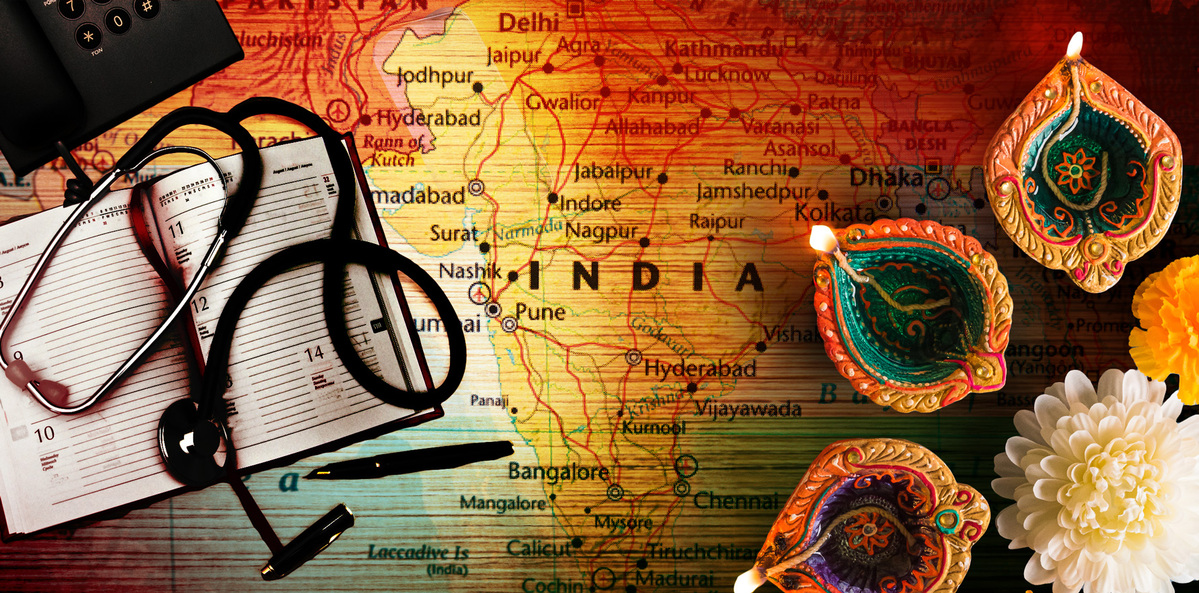The clash of social demands and biological and economic facts make fertility one of the hardest subjects – if not the hardest – we deal with in general practice.
I find fertility consultations to be some of the most difficult ones we do in general practice. Fertility – or perhaps more accurately, subfertility.
And because at least one third of my patients are women between 20 and 45, I spend a lot of my workday talking about fertility.
I think there are four distinct types of consultations I have with women about fertility. Firstly, there are the younger nulliparous women who are vaguely or firmly planning for pregnancy and want to discuss pre-conception care. Often, they are seeking comprehensive pathology and pelvic ultrasounds to reassure that they are medical well and safe to try for pregnancy. These consultations are quite straightforward, and guideline driven. Many times, these patients are still on contraception and are just seeking medical reassurance about their fertility plans. Mostly these appointments are full of education about healthy diet and exercise in pregnancy, effective efforts for conceiving like timing of intercourse or ovulation tracking, and lifestyle efforts to improve health prior to pregnancy. They’re optimistic, excited, and often full of health anxiety that can be reassured and redirected into encouragement and joy about a new stage of life.
Secondly, there are the nulliparous women who are a little older; often late thirties to mid-forties, wanting to discuss pregnancy planning. This is often a heavier consultation, in my experience at least, because these patients usually have high health literacy, have had years to decades of friends and relatives have babies before them, and usually very aware of the dramatic decline of fertility with age. Often, women have found partners later in life or have intentionally embarked on a journey of solo parenthood. Many times, women have had conflicting priorities like career progression or travel or carer roles that took precedence over pregnancy plans, or simple had a change of heart about having children.
These consultations are full of uncertainty and confronting data, and in all honesty, these women probably leave my room more anxious than when they came in. There is often already an undercurrent of (misplaced and unfair) regret and guilt; I should have had babies when I was younger; I am too old; I will be a “geriatric mother” (where did this term even come from?); it is my fault if I don’t get pregnant because I left it too late; and how will I afford IVF? In these consultations, I try to be the gentlest I can be as a doctor because I truly believe (and firmly tell patients) that most people can only have and want babies when they are ready physically, emotionally, socially, financially and their lives are amenable to this massive addition. I deeply respect this. But ovaries don’t.
Related
Which brings us to the third group of discussions about fertility: when subfertility is identified. This is often where my scope of practice ends. Usually, these are patients who have been actively trying for an expected length of time (say, 12 months for a woman in her 20s, and three to six months for a woman in her early-mid 30s) and not yet conceived. Sometimes, I have arranged an AMH which has returned a low result. For those who are unfamiliar, the anti-Mullerian hormone is a non-Medicare funded pathology test that provides some indication of ovarian reserve, presented as ranges of values depending on age. A low AMH implies low ovarian reserve and usually necessitates early referral to a fertility specialist. These consultations are often in the “breaking bad news” category but largely centred around problem solving and management. Usually, I discuss the possible causes of the subfertility, arrange extensive work-ups for both partners in heterosexual couples (including pathology for both, pelvic ultrasounds and scrotal ultrasounds if indicated, and semen analysis). I refer to a fertility specialist if there are no obvious reversible causes and outline all the wonders of modern medicine that is fertility treatment.
The tentative and unwanted part of this discussion is about expectations. Sometimes women have seen the tough fertility journeys of friends or relatives, and aware of the toll that treatments like IVF can have on physical and mental health. Sometimes patients are quite unprepared to hear about the average duration of time, number of cycles, or cost that IVF involves (each cycle costs around $10,000). About 20% of women who start a treatment cycle have a baby. The highest success rates are quoted for women under the age of 34, but about a quarter of women who have IVF are over 40 years old. This bit of the consultation starts to get quite emotionally heavy and the increasing cortisol is palpable. These consultations are intimidating, and often with a dwindling sense of hope, despite my best efforts to provide realistic optimism.
So finally, there are the consultations that sometimes feel utterly helpless and hopeless, because these are for the patients with the “fertility failure”. The women may have tried unsuccessful cycle after cycle of IVF for a decade and feel emotionally battered, and may have spent over $100,000 or more in medical fees. Sometimes it’s women who have unfairly had premature menopause before they’ve had babies; or had oophorectomies or hysterectomy or failure of egg-preserving strategies prior to oncological treatment.
I have had plenty of patients who, after years of unsuccessful fertility treatment and being completely emotionally spent, have decided to proceed with their lives without biological children, and behold! an unexpected and precious natural conception. We all anecdotally know that story; the couple who after 15 years of trying for a baby, give up, go on a holiday, and then come back home pregnant. But more common are the hundreds of patients who did not get their happy ending. Either they decide to make their family some other beautiful way (like adoption or fostering), or live (I hope) an equally meaningful and wonderful life without children, or something in between.
In many communities and societies there are completely tone-deaf attitudes to women’s fertility. It is really emotionally complex and not all women have an easy route to pregnancy and babies. Many women don’t want babies. Great, leave them and their choices alone. Many women want babies and get them easily. Great, that’s happy news. Many women want babies and can’t or don’t get them. That’s emotional havoc.
Even tougher barriers of access, cost, stigma, medicalisation, and medicine are faced by same-sex couples or non-binary and trans people or single mothers – by anyone other than heterosexual couples who may also want to be a parent, particularly a biological parent.
As a doctor who practices across the entire lifespan and has a special interest in pain management and palliative care, I actuallyfind fertility to be the tougher discussion. It needs more emotional intelligence, sensitivity, and careful and clear communication, because of the hope and anxiety that get attached to it. Fertility services with aggressive messaging (“We never stop trying”) may commercially capitalise on the vulnerability of people wanting to be parents, but as doctors, we all know that life sometimes just isn’t fair. Not everyone can afford fertility treatment, not everyone can or wants to tryforever, and sometimes every effort just doesn’t work. Fertility, sadly, is subject to the same rules of mortality of the rest of the human body.
I think we are living in a world that is trying to be more sensitive with language and tolerance and understanding that humans have complex and diverse experiences of life. We have franker and more direct conversations, both within and outside our consultation rooms, and try to do this without paternalism. I take a lot of cues and lessons from my experiences as a doctor, and especially in the case of fertility. I see patients struggle with subfertility, and then struggle even more with devastating commentary from their ignorant friends and family: “You’d better get on with it and have kids soon!”, “You’ve been married three years, isn’t it time for a baby?”, “All I want for Christmas is to be a grandmother”, “You should freeze your eggs!”. These are not well-meaning comments. Women don’t owe anyone explanations or justification for their fertility decisions, and women certainly shouldn’t have to shoulder societal expectations of quick, easy, and timed paths to having a baby, especially if their painful and exhausting fertility experience is quite the opposite.
So, let’s all collectively assume that a woman’s fertility is none of our business – the only time it’s our business is when a woman is paying for our medical advice to discuss it.
Dr Pallavi Prathivadi is a Melbourne GP and an adjunct senior lecturer at Monash University, with a PhD in safe opioid prescribing. She was a Fulbright Scholar at the Stanford University School of Medicine in 2020-2021 and the 2019 RACGP National Registrar of the Year.





